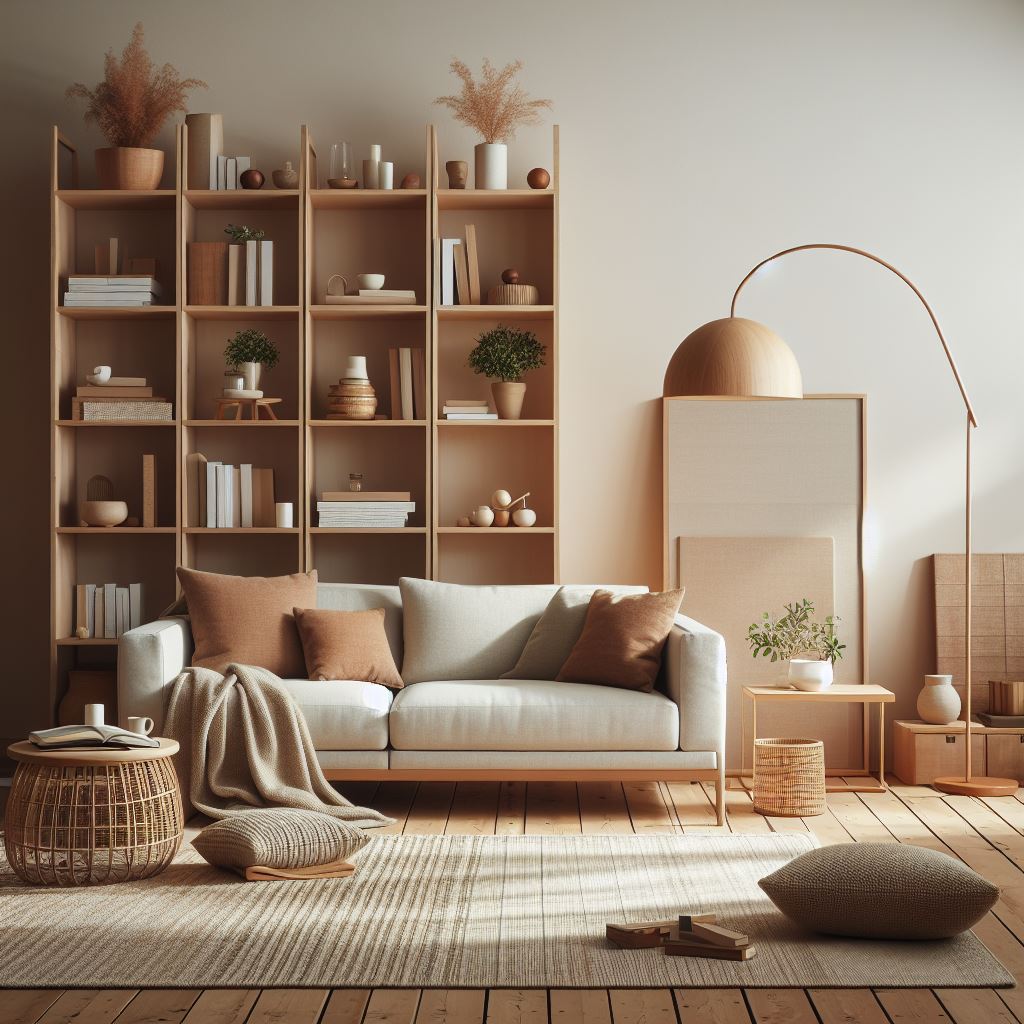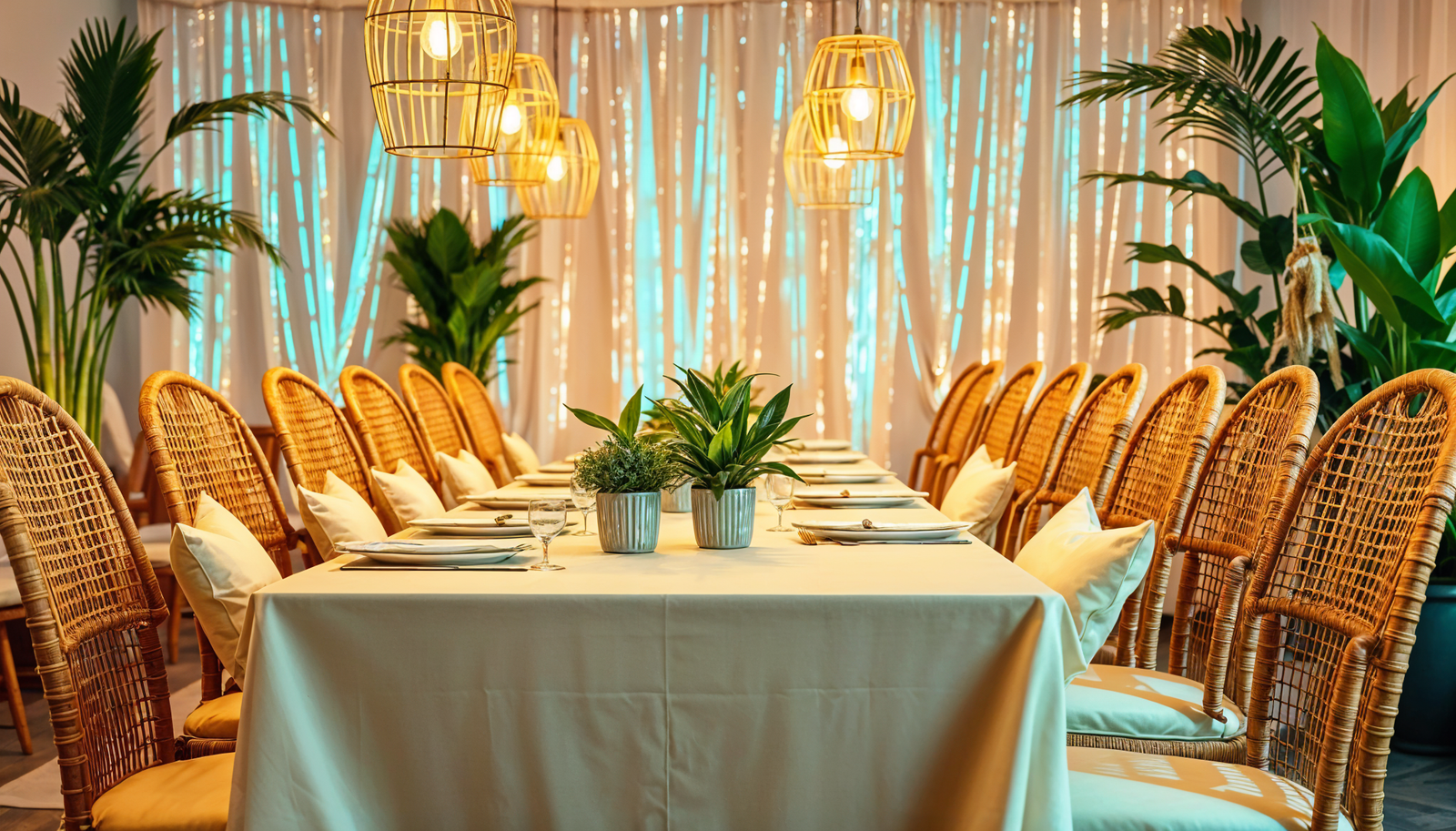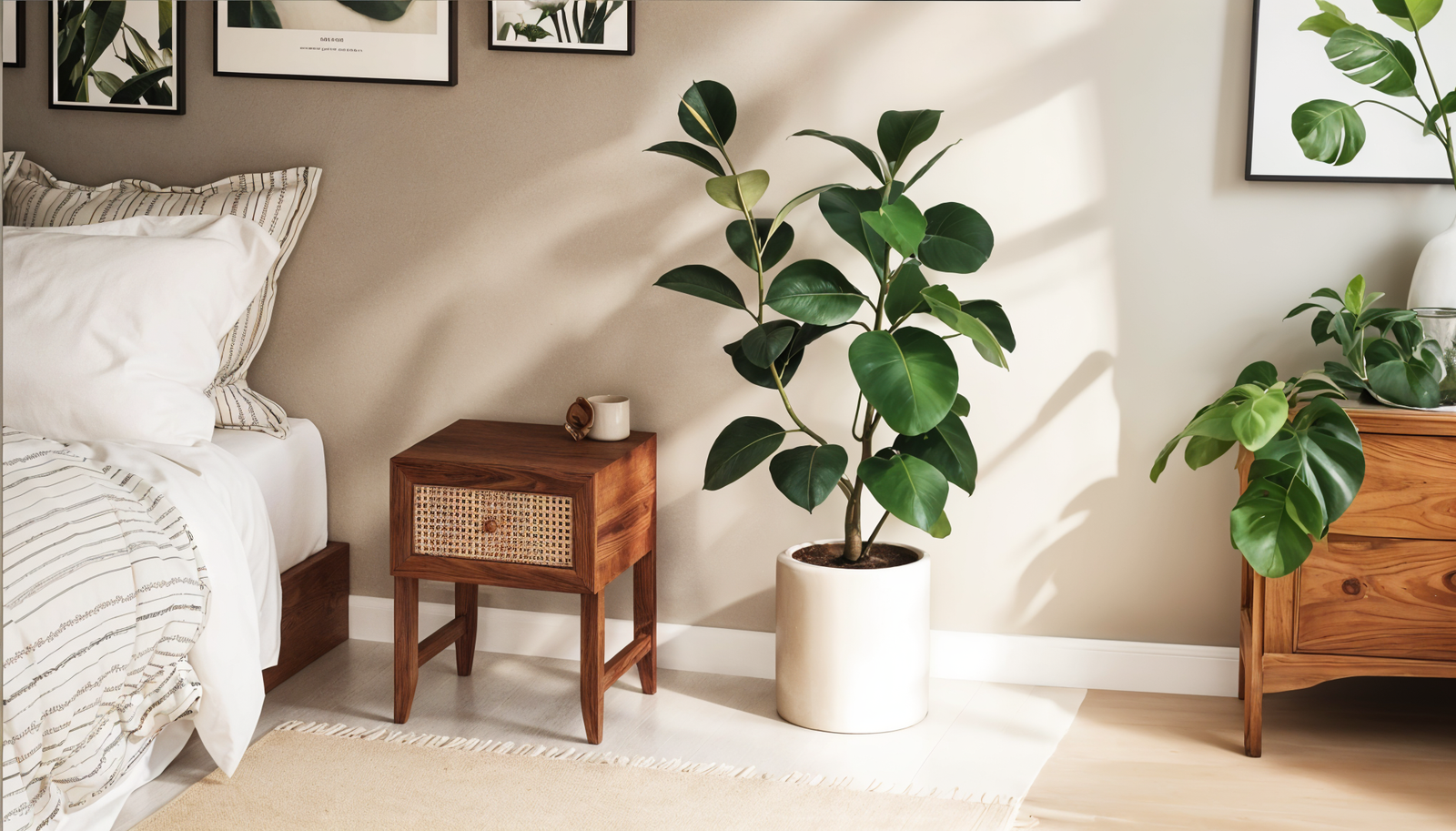🤍 Unmatched Quality, Authentic Craftsmanship
🤍 Unmatched Quality, Authentic Craftsmanship
🤍 Unmatched Quality, Authentic Craftsmanship
If you're on the lookout for what is the difference between Scandinavian and Muji, you've likely come across the terms Scandinavian design and Muji style.
These two-design aesthetics have gained significant popularity in recent years, captivating homeowners with their clean, simple, and functional approach to decorating.
But what sets them apart? In this article, we'll explore the key differences between Scandinavian design and Muji style, helping you understand their unique philosophies and aesthetics to determine which one best suit your needs and preferences.

In recent years, there has been a significant increase in the popularity of Scandinavian and Muji interiors in modern homes.
Homeowners are drawn to the clean lines, simplicity, and functionality of these design styles.
Scandinavian design has become synonymous with modern and contemporary interiors, while Muji style offers a sense of tranquility and Zen.
The rise of these interior design styles can be attributed to a shift towards minimalism and a desire for more calm and peaceful living spaces.
The influence of Scandinavian and Japanese culture on design trends has also contributed to the popularity of these styles in modern homes.
Scandinavian interior design is characterized by its minimalistic and functional approach.
The essence of Scandinavian minimalism lies in simplicity, clean lines, and uncluttered spaces.
By focusing on the essentials and eliminating excess, Scandinavian design creates a sense of calm and tranquility in the home.
Natural light plays a crucial role in Scandinavian interiors, as it enhances the bright and airy atmosphere.
Large windows and light-colored walls allow sunlight to fill the space, creating a sense of openness and connection to the outdoors.
Neutral color palettes, such as whites, grays, and beiges, are commonly used to enhance the brightness and simplicity of Scandinavian interiors.

Traditional craftsmanship is highly valued in Scandinavian design.
The Scandinavian region has a rich history of skilled artisans who have perfected their craft over generations.
This emphasis on traditional craft can be seen in the high quality and durability of Scandinavian furniture and home decor pieces.
Modern technology is also seamlessly integrated into Scandinavian design, combining traditional craft techniques with contemporary functionality.
For example, Scandinavian furniture often incorporates innovative storage solutions and multi-functional designs, allowing for practicality without compromising on aesthetics.
By blending traditional craft with modern technology, Scandinavian design creates a harmonious balance between timeless craftsmanship and the demands of modern living.
Muji interior design is inspired by the Japanese lifestyle brand Muji, which is renowned for its commitment to simplicity, quality, and functionality. Muji's design philosophy can be summed up in the age-old adage 'less is more.'
At the core of Muji design is the belief in eliminating clutter and creating a calm and peaceful environment.
Muji interiors embrace a minimalistic aesthetic that focuses on clean lines, uncluttered spaces, and the purposeful integration of natural materials.
This philosophy extends beyond mere design principles; it reflects a way of life that invites serenity and tranquility into your home.

While in comparison to Scandinavian and Muji styles, both embrace minimalism, there are distinct aesthetic differences between the two.
Scandinavian design is influenced by modernistic design principles, with an emphasis on clean lines, organic forms, and functionality.
On the other hand, Muji interiors draw inspiration from historical Japanese aesthetics and Zen philosophy, focusing on simplicity, natural materials, and calming environments.
Scandinavian design is deeply rooted in the modernistic movement, which emerged in the early 20th century.
It places importance on functionalism, simplicity, and clean lines.
This design approach seeks to create harmonious spaces that are both aesthetically pleasing and highly functional.
The use of organic forms and natural materials is also prominent in Scandinavian design, contributing to its timeless and elegant appeal.
Muji interiors, on the other hand, have historical roots in Japanese aesthetics and the philosophy of Zen.
The focus is on simplicity, mindfulness, and the appreciation of natural beauty.
Muji design embraces the imperfections of handmade objects and seeks to create serene and calming environments.
The use of warm hues, earthy materials, and natural textures in Muji interiors creates a sense of harmony and balance, inviting a deeper connection with nature and inner peace.

By understanding the philosophical divides between Scandinavian and Muji aesthetics, homeowners can make informed choices when it comes to creating their desired interior design style.
Whether they prefer the modernistic influences and functionality of Scandinavian design or the historical roots and zen approach of Muji interiors, both styles offer unique and compelling options for creating beautiful and harmonious living spaces.
Color plays a significant role in both Scandinavian and Muji design, with each style boasting its own distinct color palette.
In Scandinavian interiors, a neutral color scheme prevails, featuring shades of white, gray, and beige.
These light tones create a sense of brightness, simplicity, and airiness in the space.
Meanwhile, Muji interiors embrace warmer hues, incorporating browns, creams, and natural tones that add a cozy and calming atmosphere to the room.
These warm colors bring a sense of comfort and tranquility to the overall design.
To visualize the contrasting color palettes of Scandinavian vs. Muji aesthetics, refer to the information below:
| Scandinavian Design | Muji Design |
|---|---|
| Neutral color palette: white, gray, beige | Warm color palette: brown, cream, natural tones |
| Light and airy atmosphere | Cozy and calming ambience |
| Natural materials: wood, leather, stone | Natural materials: wood, rattan, linen |
In both Scandinavian and muji furniture comparisons, furniture plays a pivotal role in creating a space that is both functional and aesthetically pleasing.
Understanding the material choices in furniture design is essential to appreciating the distinct characteristics of each style.
In Scandinavian design, there is a strong emphasis on natural materials.
Wood, particularly solid wood, is frequently used to create furniture with clean lines and organic shapes.
The warm tones and unique grain patterns of wood contribute to the cozy and welcoming atmosphere of Scandinavian interiors.
Leather is another popular choice for furniture upholstery, adding a touch of luxury and durability.
On the other hand, Muji design incorporates a mix of natural and synthetic materials to achieve its minimalist and uncluttered aesthetic.
Natural materials like wood, rattan, and linen are used to bring a sense of warmth and texture to Muji furniture.
Synthetic materials may be integrated to enhance functionality and adaptability, ensuring that Muji furniture can seamlessly fit into various living spaces.
A notable characteristic of Muji furniture is its functional flexibility.
Muji understands the importance of adaptability in modern living, and their furniture is designed to meet the changing needs and preferences of individuals.
Muji furniture often features modular designs or multipurpose functionality.
This allows homeowners to customize and reconfigure their furniture arrangement according to the space available or their evolving lifestyle.
When we talk about Scandinavian style vs. Muji style, both Scandinavian and Muji design styles are deeply rooted in nature, incorporating organic elements that bring a sense of harmony and tranquility to their interiors.
In addition to using organic materials, both Scandinavian and Muji styles prioritize natural light and indoor plants.
Large windows and open floor plans allow abundant natural light to flood the space, creating a bright and airy atmosphere.
Indoor plants, whether placed on shelves, in hanging planters, or as standalone pieces, not only add visual interest but also contribute to a sense of freshness and connection to nature.
Let's have a look at Scandinavian interior vs muji interior. Muji and Scandinavian design styles have made a significant impact on global home decor trends, shaping the way people approach interior design.
The emphasis on simplicity, functionality, and quality in both styles has resonated with homeowners around the world, leading to the widespread popularity of Muji-inspired and Scandinavian-inspired interiors.

Muji's Zen vibe has captivated people across continents, offering a sense of tranquility and peace in the midst of busy modern lifestyles.
By creating a calming environment through minimalistic design, Muji has influenced home decor trends to prioritize simplicity and authentic living spaces.

Meanwhile, Scandinavian design's clean lines, airy spaces, and functional approach have made it a highly sought-after style in home decor.
The Scandinavian aesthetic, with its neutral color palettes and emphasis on natural light, creates a sense of brightness and openness in any space.
Have a look at the following information on Scandinavian minimalism vs. muji.
| Global Home Decor Trends | Muji's Influence | Scandinavian Design's Popularity |
|---|---|---|
| Minimalism | Muji's Zen vibe promotes simplicity and minimalistic living. | Scandinavian design's clean lines embody minimalism and functionality. |
| Tranquility | Muji inspires calm and peace with its emphasis on simplicity and quality. | Scandinavian design creates a serene atmosphere with its airy spaces and use of natural light. |
| Connection to Nature | Muji's use of natural materials and earthy tones brings nature indoors. | Scandinavian design's focus on natural elements connects the indoors with the outdoors. |
Now that you have read the above article, maybe you still have a couple of questions on this topic, so we will answer these questions below.
Scandinavian design and Muji style are both minimalist and modern interior design styles.
However, there are distinct differences in their design philosophies and aesthetics.
Scandinavian design originated in the Nordic countries and is known for its clean, simple, and functional aesthetic.
Muji style, on the other hand, is inspired by the Japanese lifestyle brand Muji and focuses on simplicity, quality, and functionality.
Scandinavian interiors often feature a neutral color palette, with white, gray, and beige being commonly used to create a sense of brightness and simplicity.
Muji interiors, on the other hand, embrace warmer hues, with brown, cream, and natural tones adding a cozy and calming atmosphere to the space.
Creating a Muji, or Scandinavian-inspired space, requires finding the balance between minimalism, functionality, and comfort.
Start by decluttering and organizing your space, removing unnecessary items, and focusing on the essentials.
Select furniture and decor pieces that reflect the principles of each style, whether it's the simplicity and quality of Muji or the clean lines and functionality of Scandinavian design.
Consider your personal aesthetic and preferences when choosing colors, materials, and textures for your space.
In conclusion, Scandinavian and Muji design styles offer unique approaches to interior design, each with its own philosophy and aesthetic.
Both styles embrace minimalism and functionality, but there are distinct differences in their design philosophies, color palettes, furniture choices, and overall atmosphere.
The choice between Scandinavian and Muji design ultimately comes down to personal preference and the desired atmosphere for your space.
If you prefer clean lines and airy spaces, Scandinavian design may be the right choice for you.
Scandinavian interiors often feature neutral color palettes and a focus on natural materials, creating a sense of brightness and simplicity.
On the other hand, if you are drawn to simplicity and a Zen vibe, Muji style may be more suitable.
Muji interiors incorporate warmer hues and a mix of natural and synthetic materials, creating a cozy and calming environment.
The philosophy of 'less is more' is at the core of Muji design, with an emphasis on eliminating clutter and creating a peaceful atmosphere.
Whether you choose Scandinavian or Muji design, both styles can help you create beautiful, functional, and peaceful living environments that promote well-being and a connection to nature.


